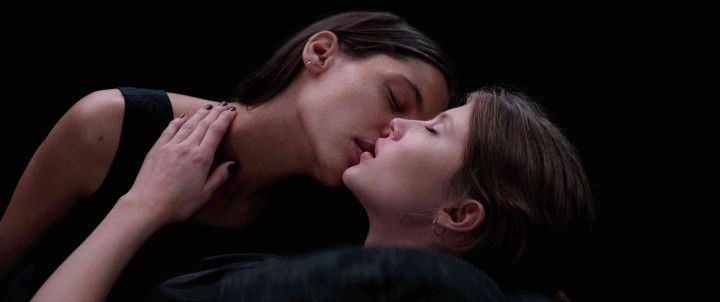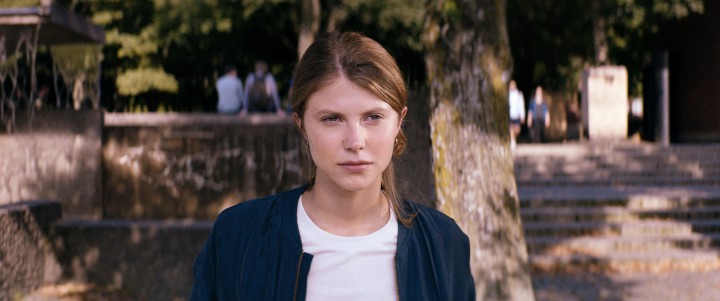Somewhere between mother! and Mulholland Drive you’ll find Norwegian writer/director Joachim Trier’s latest, the supernatural coming-of-age story Thelma. Taking the religious allegory of the former and the surrealist sensuality of the latter, Trier has crafted a tightly wound psycho-sexual suspense thriller that proves as disturbing as it is compelling (and thoroughly Scandinavian). While it may not be a serious contender, Norway’s entry into this year’s Best Foreign Film Oscar race has an undeniable power to unsettle and a genre-defying appeal that make it well worth a watch, even if it doesn’t take home a statue come March.
Having already established himself as a pre-eminent visual stylist with films like Louder Than Bombs and Oslo, August 31st, Trier has turned his obsessively formalist eye toward an unlikely subject — namely, the awakening and repression of a young girl’s sexual identity. The film’s eponymous protagonist is a college student confronted with a nascent homosexual attraction to one of her classmates, a romance she finds to be deeply at odds with her Christian values. Her internal conflict is so pronounced that Thelma begins suffering from inexplicable nonepileptic seizures — episodes often accompanied by birds swarming to her location and other assorted strangeness, suggesting that Thelma possesses a power she can’t comprehend.
In the title role, Eili Harboe strikes a chord with her doe-eyed vulnerability and unaffected charm, a natural ingenue. Her interest in Anja (Kaya Wilkins) seems rooted in envy as much as sexual desire, although the latter is an ever-present tension that the two play flawlessly in their scenes together. But as Thelma’s powers lead to unintended — and increasingly disastrous — consequences, a harder edge appears in Harboe’s performance. The film’s final sequences resonate with a scintillating energy that rewards the patience of those challenged by the first two acts’ ponderous pacing.
While Trier’s metaphor for the power of female sexuality is just as overt as his religious subtext, the supernatural conceit remains nebulous and only vaguely defined. Trier avoids providing easy answers to armchair analysts, weaving a net of visual motifs that suggest without stating — what do symbols such as snakes, water and the aforementioned birds signify? Everything is left open to thought-provoking and occasionally frustrating interpretation.
Trier’s camera, often observing dispassionately from an omniscient God’s-eye-view perspective, frames his characters with an icy detachment. And while his stylistic flourishes may be flashy at times, they never come across as extravagant. Where more conventional filmmakers might go for the easy jump scare, Trier favors the brand of slow-burn, arthouse-compatible dread that made It Comes at Night such a reinvigorating breath of fresh air earlier this year. Trier doesn’t so much eschew genre conventions as make them his own, like De Palma by way of Val Lewton. There are certainly horror tropes present here, but never at the expense of story or character — what we get instead is something atypical and yet accessible, indebted to its influences while remaining stubbornly and completely unique. Not Rated.
Now Playing at Grail Moviehouse.









Before you comment
The comments section is here to provide a platform for civil dialogue on the issues we face together as a local community. Xpress is committed to offering this platform for all voices, but when the tone of the discussion gets nasty or strays off topic, we believe many people choose not to participate. Xpress editors are determined to moderate comments to ensure a constructive interchange is maintained. All comments judged not to be in keeping with the spirit of civil discourse will be removed and repeat violators will be banned. See here for our terms of service. Thank you for being part of this effort to promote respectful discussion.